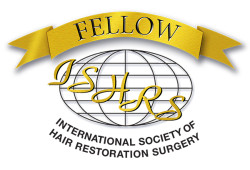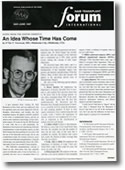 To give hair restoration surgeons more precise diagnostic information in their evaluation for patients considering hair transplants, Dr. Bernstein uses the techniques of densitometry and video-microscopy to analyze the scalp under high-powered magnification.
To give hair restoration surgeons more precise diagnostic information in their evaluation for patients considering hair transplants, Dr. Bernstein uses the techniques of densitometry and video-microscopy to analyze the scalp under high-powered magnification.
The technique gives important information on hair density, the composition of the patient’s follicular units and the diameter of their hair shafts. The new instruments give doctors vital information for making decisions about whether patients are candidates for hair transplant surgery, the amount of donor tissue needed for the hair restoration, and to help them better predict how the results of hair transplants will ultimately look.
For more information, please see Dr. Bernstein’s publication on densitometry, a podcast on hair transplantation that discusses densitometry, and the Bernstein Medical – Center for Hair Restoration press release on the news below:
Baldness Detection Devices Featured in Medical Journal
Hair Transplant Forum International publishes new article on hand-held instruments used in hair loss detection and planning for hair transplants.
The lead article in the March/April issue of the journal published by The International Society of Hair Restoration Surgery (ISHRS) focuses on the latest tools available for assessing whether or not a person experiencing hair loss is a good candidate for hair transplant surgery.
The cover story: “Densitometry and Video-microscopy” written by Robert M. Bernstein, M.D. and William R. Rassman, M.D. explores the often overlooked diagnostic practice of analyzing the scalp under high-power magnification. Getting an extreme close-up of hair patterns at the base of the scalp allows hair transplant surgeons and dermatologists a chance to not only screen candidates for appropriateness for surgery, but can also predict future hair loss patterns.
Dr. Bernstein, founder of the New York based Bernstein Medical – Center for Hair Restoration, is known for his pioneering work in new hair transplantation techniques. When asked why he thought the article was given so much prominence in the Hair Transplant Forum, he suggested that “these simple hand held instruments should be essential tools of the hair transplant doctor.” He cautioned that without precise measurements doctors run the risk of performing surgery on persons who may is not suited for this procedure.
Dr. Bernstein has authored over 50 papers on hair transplantation including some of the most influential research on techniques used to repair badly performed hair transplants. In his seminal publications describing Follicular Unit Transplantation (FUT), Dr. Bernstein introduced a brand new method of hair restoration surgery which recognized follicular units (groups of naturally growing hair follicles) as the ideal element of donor tissue to be used in hair transplants. FUT is now considered to be the state-of-the-art in surgical hair restoration.
Dr. Bernstein and his colleague Dr. Rassman began utilizing the Densitometer to determine specific hair characteristics such as hair density, and changes in hair diameter that are important in both determining who are potential surgical candidates for the new hair transplant procedures and who may respond to medications.
The International Society of Hair Restoration Surgery (ISHRS), a non-profit organization of over 700 hair restoration doctors, publishes Hair Transplant Forum to keep the Society abreast of the most recent developments in the field of hair transplantation.
Dr. Bernstein is known to the general public from his appearances on NBC’s Today Show with Matt Lauer, CBS’s The Early Show, ABC’s Good Morning America, The Discovery Channel and other nationally syndicated programs.
Posted by Robert M. Bernstein M.D. 


 To give hair restoration surgeons more precise diagnostic information in their evaluation for patients considering hair transplants, Dr. Bernstein uses the techniques of densitometry and video-microscopy to analyze the scalp under high-powered magnification.
To give hair restoration surgeons more precise diagnostic information in their evaluation for patients considering hair transplants, Dr. Bernstein uses the techniques of densitometry and video-microscopy to analyze the scalp under high-powered magnification. Dr. O’tar Norwood discusses the origin of follicular transplantation, and the influence that Dr. Bernstein’s research and publications have had on the evolution of the hair transplant procedure. Read a segment of the article:
Dr. O’tar Norwood discusses the origin of follicular transplantation, and the influence that Dr. Bernstein’s research and publications have had on the evolution of the hair transplant procedure. Read a segment of the article: The following is a portion of “An Idea Whose Time Has Come,” an editorial written by O’Tar T. Norwood, MD — founder of the Norwood Classification System for Hair Loss — and published in the May/June 1997 issue of “Hair Transplant Forum International”:
The following is a portion of “An Idea Whose Time Has Come,” an editorial written by O’Tar T. Norwood, MD — founder of the Norwood Classification System for Hair Loss — and published in the May/June 1997 issue of “Hair Transplant Forum International”:



